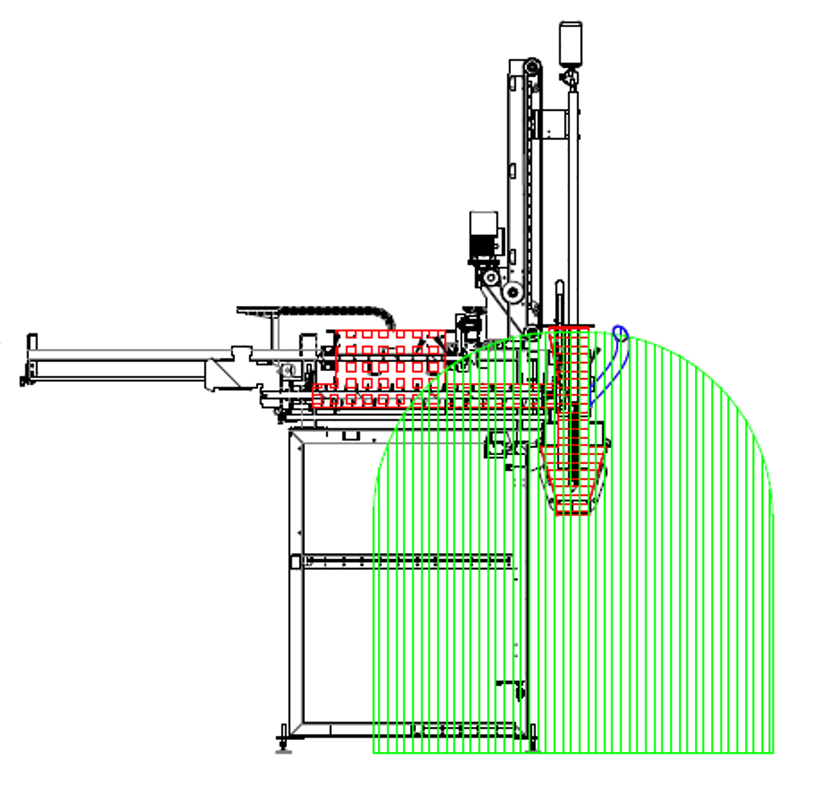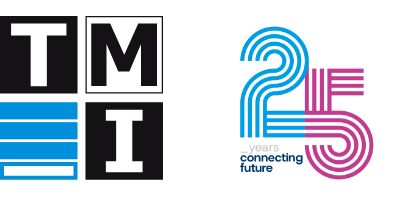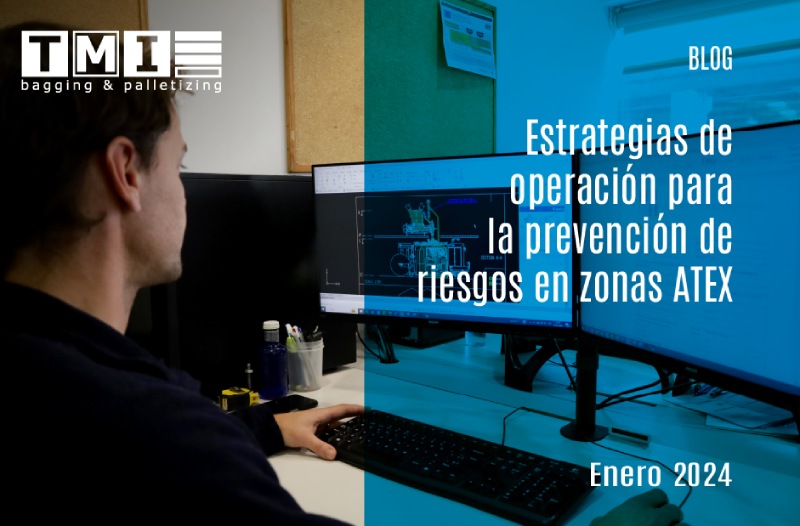Operational Strategies for Risk Prevention in ATEX Zones
In this article, we would like to share certain relevant aspects of ATEX “ATmosphère EXplosible” applications, specifically those involving powdered products, based on the accumulated experience of TMI in the various solutions it has developed.
For over 15 years, TMI has been undertaking packaging projects for applications where powdered products that can create an explosive atmosphere, ATEX, are handled. Safety requirements for both the process and operators are of utmost importance in these projects. Therefore, we continue to invest heavily in knowledge, training technicians, and designers to offer the best solution in each case.
Over these 15 years, many projects have been successfully completed, adapting to the specific requirements of each application, collaborating with clients and other stakeholders to determine the best solutions. These solutions prioritize three crucial aspects: safety, simplicity of solutions, and optimal investment cost.
Based on this experience, we would like to share the following key points that help define a technical solution for ATEX products correctly:
- DPCE o DOPEXThe Explosion Protection Document (DPCE) is a mandatory document for companies working with explosion-prone products. It involves risk assessment, area classification, and the implementation of appropriate measures to meet the minimum requirements set in RD 681/2003, ensuring that work equipment is used safely. If the company’s knowledge on this topic is insufficient, external entities are available to provide guidance in its development. Being aware of existing risks and necessary mitigation measures is the first step in ensuring worker safety.
- Caracterización del productoTo analyze a project correctly, maximum information about the product is required. This starts with having as much data as possible about the product, making it essential for critical client products to be well-characterized through the corresponding analysis, resulting in a Safety Datasheet. Parameters that often affect machine design for ATEX atmospheres include:– Minimum Ignition Energy (MIE): This parameter is especially relevant when its values are very low (between 1 and 20 mJ), as in such cases, a dust cloud could explode under certain conditions with very low energy, such as that generated by a small electrostatic discharge. Particle size distribution plays a significant role in this parameter, as smaller particle sizes result in lower MIE (greater surface area relative to volume means easier ignition).– Temperatura de autoignición: The temperature at which the product ignites directly influences the maximum temperatures of components integrated into the machine. A sufficient safety margin must always be considered, depending on whether the explosion is through a dust cloud or a dust layer.
- ZoningIt’s important for the client to seek advice on crucial aspects such as zone classification. As manufacturers, a proper zoning process relies on understanding the machine and how the product behaves inside it. Another critical detail is the extent considered for each zone. To determine this, TMI performs calculations based on existing regulations, technical documents, and factors like product properties, height of potential release sources, and ventilation characteristics of the facility, among others.

- Correct zoning prevents the client from overclassifying their installation, avoiding unnecessarily extensive ATEX zones or more restrictive zones (higher classification levels). This has a significantly negative impact on the client, affecting various aspects:
Substantial increase in machine costs:- Requirement for more restrictive personal protective equipment, such as special clothing to prevent electrostatic energy accumulation.
- Increased costs due to the use of certified external equipment (dust extractors, forklifts, etc.) and fixed infrastructure in classified areas (lighting, ventilation, fire protection, etc.).
- Prohibition of uncertified devices, mobile electronics, etc., in the classified zone.
- Need for much more restrictive operational procedures.
IImportance of Operational Procedures
To ensure safety in an ATEX installation, it is essential to establish a series of procedures and ensure their compliance.
Cleaning procedures in an explosive atmosphere facility are crucial for various reasons:
- Proper cleaning prevents the accumulation of dust layers, which, if present, can create explosive atmospheres when disturbed, leading to an increase in the classified zone (increased cost).
- Simultaneously, a layer of dust on certain parts of the machine can lead to increased temperatures, creating a potential ignition source (higher risk).
Maintenance procedures are also essential in such installations, as they help detect wear and tear on certain elements in their early stages, preventing unintended product releases at unexpected points, which would also result in an expanded classified zone.


